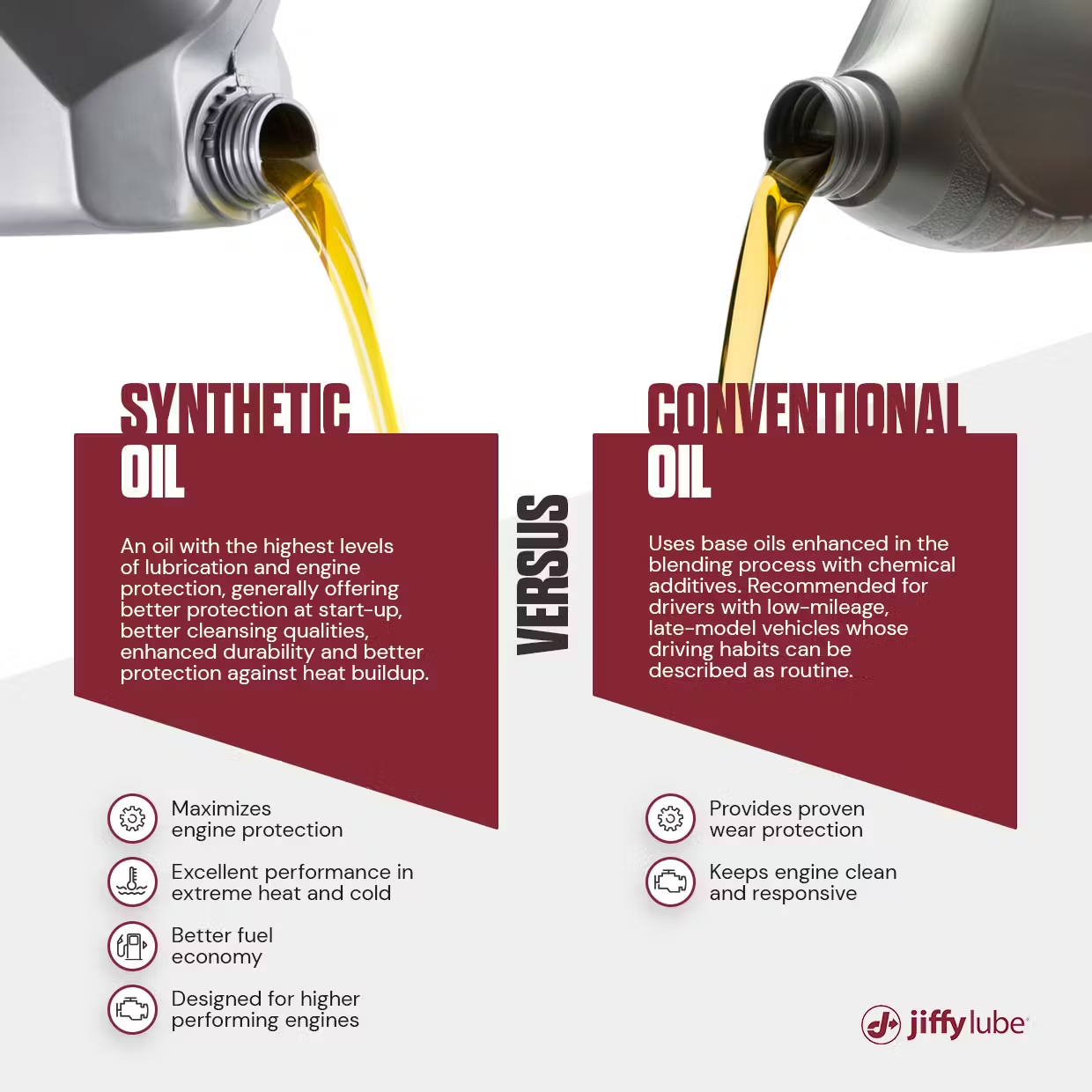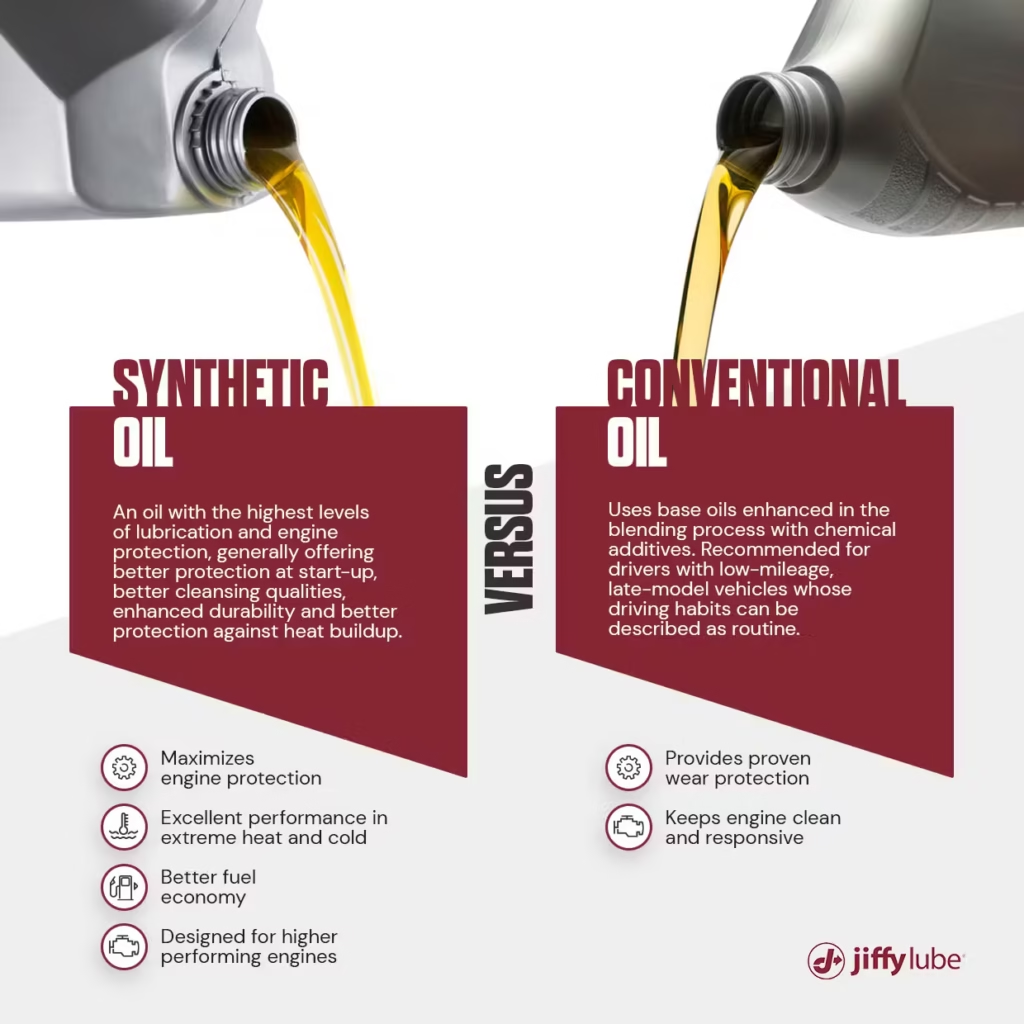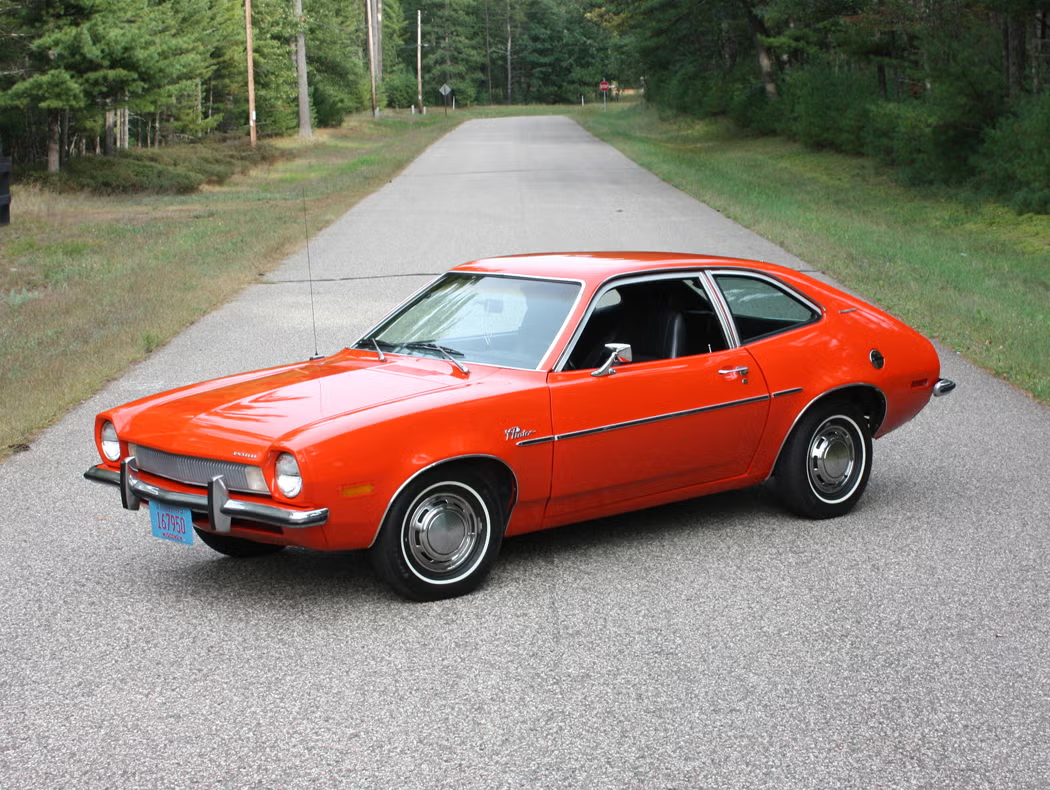

Synthetic Oil vs. Other Oils in Canada: Which is Best for Your Car?

Motor oil is the lifeblood of your car’s engine, and in Canada’s challenging climate, choosing the right type is critical. Whether you live in the freezing winters of the Prairies, the humid summers of Ontario, or the mild coastal climate of British Columbia, the oil you choose affects cold starts, fuel economy, and long-term engine health.
Limited Time Automotive Amazon DealsThis guide compares synthetic oil to other options — conventional, synthetic blends, and high-mileage oils — so you can make an informed decision for your driving needs.
The Role of Motor Oil in Canadian Conditions
Motor oil does more than lubricate engine components. In Canada, where temperatures can swing from -40°C in winter to +35°C in summer, oil must:
- Maintain fluidity in extreme cold for reliable starts.
- Protect against breakdown in high summer heat or when towing.
- Prevent sludge buildup during short winter trips.
- Reduce wear caused by harsh stop-and-go driving.
Choosing the wrong oil can mean harder starts, reduced fuel efficiency, and even engine damage.
Types of Motor Oil Available in Canada
1. Full Synthetic Oil
Synthetic oil is chemically engineered for optimal performance. It offers superior protection across a wide temperature range and resists breakdown better than conventional oils.
Advantages in Canada:
- Cold-weather performance: Flows easily at -40°C, perfect for harsh winters.
- High-temperature stability: Maintains protection during summer road trips or heavy towing.
- Cleaner engine operation: Reduces sludge formation.
- Longer intervals: Can often go 10,000–15,000 km between changes in normal conditions.
Best for:
- Modern vehicles, especially turbocharged engines.
- Drivers in provinces with severe winters like Manitoba, Saskatchewan, and Alberta.
- Frequent highway drivers or those who tow.
2. Conventional Oil
Conventional oil is refined from crude petroleum. While cheaper than synthetic, it thickens more in cold weather and breaks down faster at high temperatures.
Advantages in Canada:
- Lower upfront cost.
- Suitable for older, low-performance engines.
Disadvantages:
- Poor cold-start performance in sub-zero temperatures.
- Requires more frequent changes (5,000–7,000 km).
- Less resistant to sludge buildup in short-trip winter driving.
Best for:
- Older vehicles in mild climates such as coastal British Columbia.
3. Synthetic Blend Oil
A mixture of synthetic and conventional oils, synthetic blends offer some benefits of full synthetic at a lower price.
Advantages in Canada:
- Better cold-weather flow than conventional oil.
- Improved resistance to breakdown in hot weather.
- More affordable than full synthetic.
Best for:
- Drivers in moderate climates.
- Those seeking a balance between performance and cost.
4. High-Mileage Oil
Designed for vehicles with over 120,000 km, high-mileage oil includes additives that reduce leaks, oil burn-off, and wear.
Advantages in Canada:
- Keeps older seals flexible in cold weather.
- Reduces oil consumption in older engines.
Best for:
- Aging vehicles still used daily in varied Canadian climates.
Cold-Weather Performance: The Canadian Challenge
One of the biggest reasons Canadian drivers switch to synthetic oil is winter cold-start performance.
- Conventional oil thickens significantly below -15°C, increasing wear during startup.
- Synthetic oil remains fluid even at -40°C, protecting the engine immediately.
For example, in a Manitoba winter where temperatures can drop to -30°C overnight, a 0W-20 synthetic oil will start flowing instantly, while conventional oil may take several seconds to lubricate all components — a crucial difference.
Cost Comparison in Canada
| Oil Type | Typical Change Interval (Normal Conditions) | Average Cost per Change (CAD) |
|---|---|---|
| Conventional | 5,000–7,000 km | $55–$75 |
| Synthetic Blend | 7,000–10,000 km | $65–$90 |
| Full Synthetic | 10,000–15,000 km | $90–$140 |
| High-Mileage | 5,000–7,000 km | $70–$100 |
While synthetic oil costs more upfront, it can reduce the number of oil changes per year, saving money and time over the long term.
Manufacturer Recommendations in Canada
Most new vehicles sold in Canada — from Honda Civics to Ford F-150s — recommend synthetic oil, often with low winter ratings like 0W-20 or 0W-30. This is due to:
- Stricter fuel economy standards.
- Tighter engine tolerances.
- The need for better cold-weather protection.
Ignoring manufacturer guidelines can void warranties and lead to engine issues.
Driving Habits and Oil Choice
Short Trips in Winter:
If you frequently drive less than 8 km in winter, moisture and fuel vapour build up in the oil because the engine never fully warms up. Synthetic oil handles these contaminants better, reducing sludge risk.
Highway Driving:
Long-distance highway drivers benefit from synthetic oil’s stability at operating temperature.
Heavy Loads or Towing:
Synthetic oil’s resistance to thermal breakdown protects engines under heavy load — useful for pickup trucks and SUVs used for hauling.
Regional Oil Recommendations in Canada
| Region | Winter Avg Temp | Recommended Oil Type | Common Viscosity |
|---|---|---|---|
| Northern Territories | -25°C to -40°C | Full Synthetic | 0W-20, 0W-30 |
| Prairies (AB, SK, MB) | -15°C to -35°C | Full Synthetic | 0W-20, 0W-30 |
| Ontario & Quebec | -10°C to -30°C | Synthetic or Blend | 0W-20, 5W-30 |
| Atlantic Canada | -5°C to -25°C | Synthetic Blend or Full Synthetic | 5W-30, 0W-30 |
| Coastal BC | +5°C to -5°C | Conventional or Blend | 5W-30 |
Environmental Considerations
Synthetic oils generally last longer, meaning fewer oil changes and less waste oil to dispose of. Many Canadian oil change centres participate in used oil recycling programs, ensuring responsible disposal.
Pros and Cons Summary
| Oil Type | Pros | Cons |
|---|---|---|
| Full Synthetic | Best cold-weather performance, long intervals, cleaner engine | Higher upfront cost |
| Conventional | Low cost, suitable for older engines in mild climates | Poor cold performance, more frequent changes |
| Synthetic Blend | Balance of performance and cost | Not as durable as full synthetic |
| High-Mileage | Protects older engines, reduces leaks | Shorter intervals than full synthetic |
Conclusion
For most Canadian drivers — especially those facing freezing winters — full synthetic oil is the best choice. It flows instantly in extreme cold, resists breakdown in summer heat, and protects engines under demanding conditions. While conventional and synthetic blends have their place, particularly in milder climates or older vehicles, synthetic oil offers the broadest benefits across Canada’s diverse driving environments.
Ultimately, the best approach is to follow your vehicle manufacturer’s recommendation, match your oil to your regional climate, and prioritize quality over short-term savings. Doing so will keep your engine running smoothly for years, no matter where in Canada you drive.
Add a comment Cancel reply
Categories
- Auto Detailing (1)
- Car News (2)
- Car Reviews (1)
- How To (1)
- Uncategorized (165)
Recent Posts
About us

Related posts


Peut-on vraiment se fier à la capacité de remorquage d’un véhicule?

What Does GMC Stand For? The Canadian Story Behind a Legendary Truck Brand








